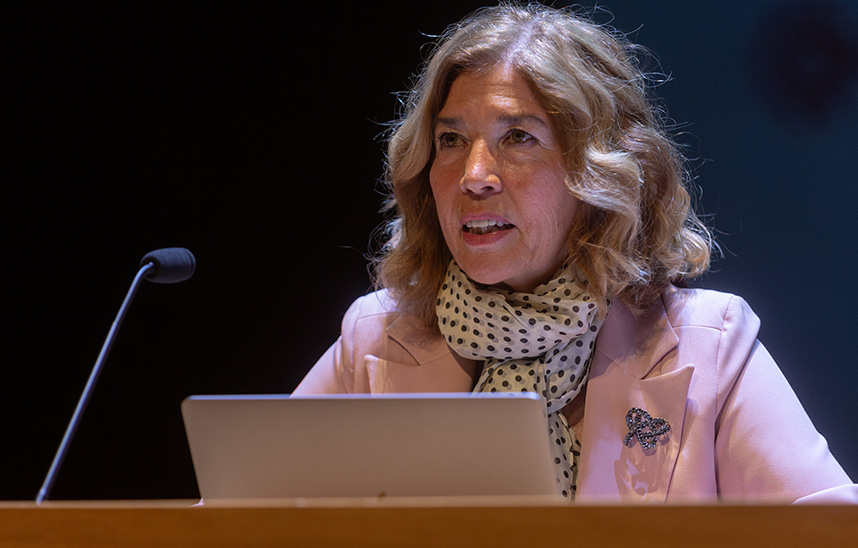Josefina Planas: "Although it is one of the most studied manuscripts, there are still questions about Las muy ricas horas".
The professor gave a lecture at lecture on the Limbourg Brothers' manuscript at the University of Navarra.

PhotoManuelCastells/
"He can be considered a Mannerist prince". This is how Josefina Planas, professor of Art History at the University of Lleida, presented Jean de Berry, at the lecture series Francisco Calvo Serrallerorganized at the University of Navarra by the Friends of the Prado Museum Foundation and the School of Philosophy y Letras. In the theater of the Museo Universidad de Navarra, attendees have entered, through his explanations, in the court of the prince and his artists.
Salas explained how Jean de Berry commissioned "the books of hours, each one of them more lavish and richly illuminated". With their pearl bookmarks, the green ones made with malachite and silver clasps, in this collection of manuscripts "their image was much more important than their devotional content". As the expert recounted, the manuscripts of the hours were commissioned to three teenagers: the Limbourg brothers. Their attention with the duke was so familiar that they even played a joke on him: "They gave him a fake codex that had velvet covers, silver clasps and enamel, but inside there was no folio subject ". High-level merchants and artists crafted the hours, of which the last book stands out: The Very Rich Hours of the Duke of Berry..
"In the codex calendar images were created, idealized scenes that correspond to the scenes of the year with an iconographic reading," she said. The professor also pointed out that "they are not only genre scenes, but they reproduce events relevant to the monarch". Salas exemplified this with the link marriage of the Duke's daughter in April and August, as well as crude criticisms of the peasant world in February. In this same month, "one of the best achieved images is also reflected: a snowfall that had few precedents in the history of art".
On the other hand, the speaker has pointed out details such as the number of women dressed in gray, "then the color of hope". Delving into the details, there is a particularity that is not perceived at first glance: in the month of January are camouflaged a bear and a swan "whose interpretation in French, ours and cygne, are combined in Oursine, the name of his lover," says Salas. In the conclusion of the book, the astrological man united parts of the human body with the influence of the stars, which "opens a direct path to naturalism".
However, the codex was interrupted along with the lives of the Limbourg brothers and the Duke of Berry in 1416. "The 100 Years' War was grim for him. Its very negative consequences are said to have embittered his last days." Although many of Jean de Berry's possessions disappeared, "we can recall them through the reproduction of The Very Rich Hours," explained the professor. Today, thanks to various investigations, it is known that more teachers were involved. As she explained, some time later, the Dukes of Savoy bought the unfinished codex in Genoa. "It was simply as loose notebooks; not even as a volume." Today, it is in Chantilly and it is impossible to consult it in person, the expert said, affirming that "despite being one of the most studied manuscripts, there are still questions about it".
Organized by the Fundación Amigos del Museo del Prado and School of Philosophy y Letras of the University of Navarra, the lecture series will continue on successive Wednesdays until February 14. With Viscofan as sponsor and the partnership of the Diario de Navarra Foundation and the Museum of the University of Navarra, it will host experts specialized in Gothic art. Tickets can be purchased on the museum's website and at locker.




